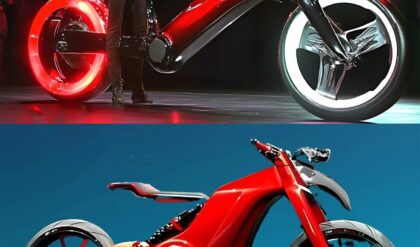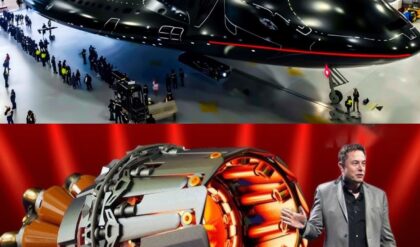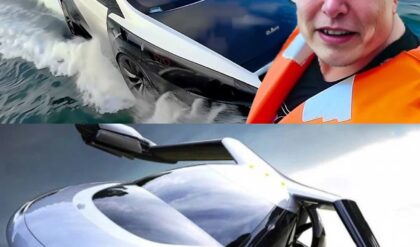Scarlett Johansson has always been an unreliable narrator of sexuality and femininity in its primitive form. The blonde bombshell of the ’50s and ’60s reincarnated, her breasts and her voluptuous figure, her features that combine sultry coyness and childlike girth have made her a dream girl of the late ‘90s and early ‘00s. The actress has admitted lately that this wasn’t the image she wanted to be seen through as an actress, that she was groomed into the blonde bombshell/pretty baby archetype in her earlier acting years. Scarlett defied that, however, through her later career choices, where she became more comfortable in her skin to the extent of shedding it all off.
How Johansson Inverted Heteronormative Sexuality
There are two films in which Scarlett plays on the “Scarlett” persona with a mischievous in-your-face rebellion twist: Under the Skin and Ghost in the Shell. Although the latter might have brought criticism for casting choices due to whitewashing, it was -on her part- a brave choice and a bold move to deconstruct her celebrity image.
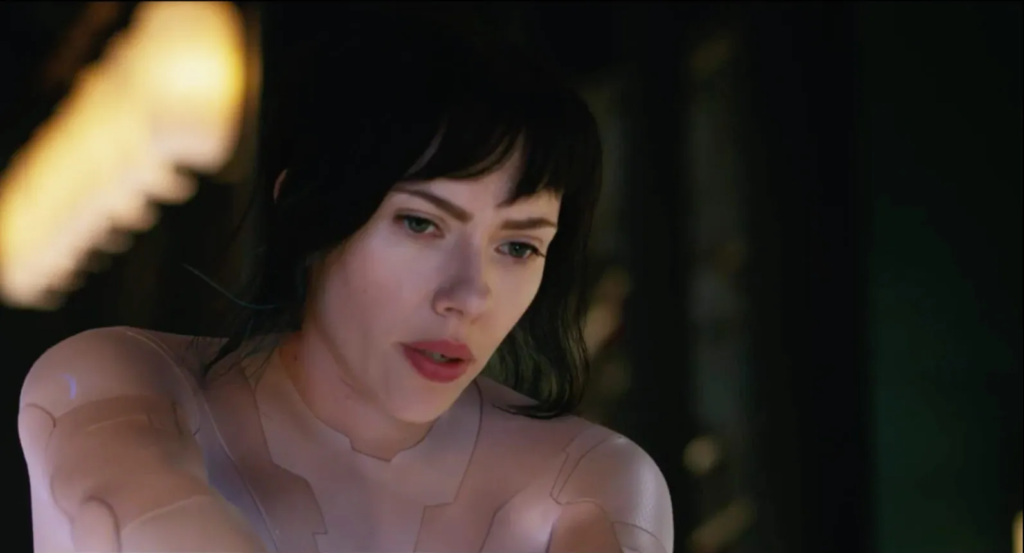
When Scarlett first appears on screen in Ghost of the Shell she is stripping. Everybody anticipates. It’s Scarlett Johansson on the big screen getting naked with flawless skin and lips that have always been marketed as the ultimate cis hetero man’s (and lesbian’s) dream. Scarlett never fails to drag on hungry onlookers, perverse spectators from behind their laptop screens.
But something else is revealed. Scarlett’s female body is sexless without all the definite features that cause a female to be -arguably- female: no nipples, clitoris, or vulva. It’s a sewn female body without all the openings, but it’s still there to ponder with all its sexual/sexless energy. It’s a female mannequin like the ones found in horror movies such as Maniac and Lights Out, a sea of genitalia-less female figures displayed and not exposed. This defines Scarlett’s rendition of Motoko or Major Mira Killian, the first full-body cyborg. A human whose brain has been implanted in another body, her sense of abduction is a constant reminder that her presence is in a body where she doesn’t belong. A reminiscence on body dysphoria or a hijacking of sorts translates much that many people might not be able to express in words.
In multiple scenes of the movie, Scarlett is seen naked, but it’s a form of cocooned nudity, a bare body imprisoned in the confines of gender aesthetics. She is still Scarlett, still described in one of the video titles on YouTube “Being Thirsted Over by Men”. But she redefines what it means to be a woman, and a past sex symbol for all that matters, having all the metrics of the penultimate sexy Hollywood blonde. Scarlett doesn’t dispose of her attractive features for the sake of a role. She’s not Charlize Theron shaving her brows or Nicole Kidman donning a prosthetic nose, but she’s retaining her cool features, cat-like eyes, and infamous pout, without a body underneath to complete the wet dream.
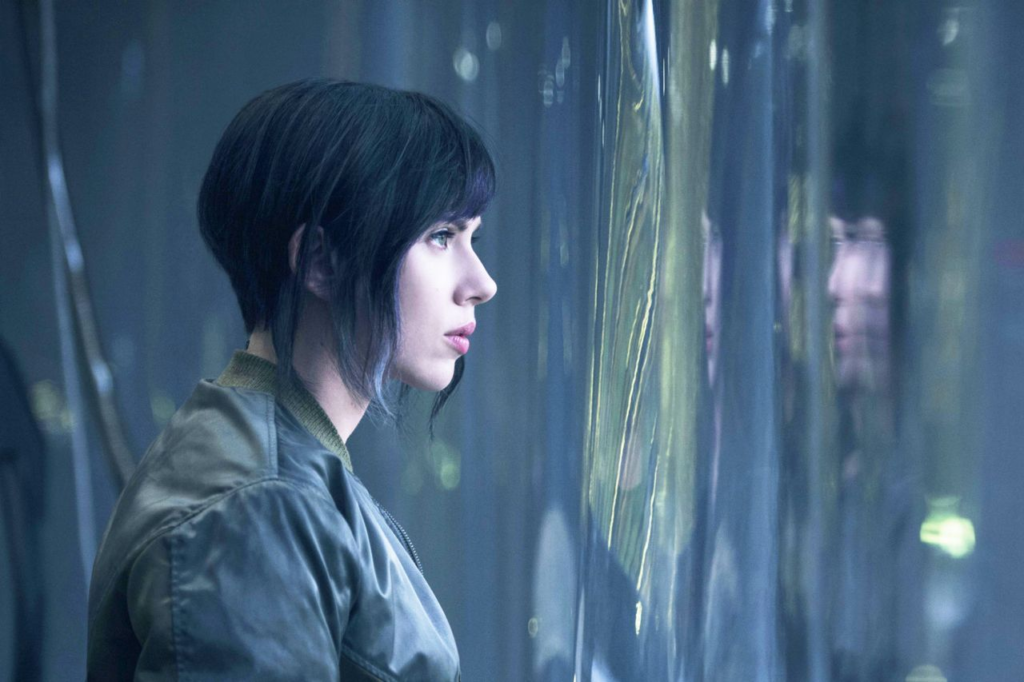
In Ghost in the Shell, Scarlett plays a character with a gender identity crisis, coming to terms with her body and existence. She questions the link between biological sex and actual gender with her subtle treading on gender lines, being a fully-developed female and refusing to succumb to the gender plethora of femininity. Major Mira Killian is not just a cybernetically modified human but a lost soul, a creature that hovers on the borders of feminine and female, not fully conforming to either.
The idea of owning a body, gendered but non-gendered, becoming but also unbecoming, working the way through gender discovery and dysphoria, is the core of the original Ghost in the Shell animated movie. Aside from the A.I. anxieties and the futuristic doom, we are attached to Motoko’s journey across humanity and bodies, identifying with her quest to discover her true self and those around her, in the process she touches on different themes and pathways that make her distinct, that is her corporal journey as she comes to terms with her bodily restrictions and capabilities.

Body Discomfort, Dysmorphia, and Gender Identity Crisis
In Under the Skin, Scarlett is a female. She just exists with a skin that she puts on to become more familiar with the planet she plans to invade. She’s not a woman but a female entity that doesn’t conform to presumed ideals of sexualizing that gendered being. The alien is incapable of having sex and is almost punished for that by being forced into it. The alien becomes an embodiment of an agender dream. It is a female on the border of gendered expression, without femininity, but also defined as such.
It’s easy to dismiss someone’s identification or lack of their body. It’s a question that has plagued my mind for years. What is a body? What is a male or female body? My body scared and intrigued me in how it differed from other members of the same gender that I was supposed to belong to. When I noticed the quirks and mismatching details, I realized that body dysphoria is not that foreign.
The idea of an imperfect female body begins at a very young age for some girls, and it’s also something that some women struggle with as they grow up. However, the idea of a “weird” female body is something else. There’s always something wrong with this woman: too much hair, dark armpits on fair skin, a mustache that needs constant waxing or painful laser sessions to remove, a weird-looking boob, a vagina buried underneath bushes of coarse hair, a strange-looking face; blemishes, scars, pigmentation, freckles, too many freckles, etc. As someone who has always felt like an alien in their own body, suffering the scrutiny of female peers who might or might not have criticized or pointed out an eccentricity, it was refreshing to watch Scarlett Johansson reject that embodiment of feminine perfection.

What is Under Scarlett’s Skin?
In Under the Skin, Scarlett sheds the skin of a sexy female luring people. She harbors on the fringes of the world, wearing a fur coat that creates an allegory to prominent male figures in other cinematic masterpieces -The Driver in Nicholas Winding Refn’s Drive– but doesn’t provide proof of consent to being male or female. Scarlett plays an alien, preying on unsuspecting men and feeding them to the void, where matter dissolves and shrinks. People are merely energy sources for a more considerable creation. Scarlett’s creature is female underneath, but the escalation to the revelation of the true self also brings up how gender is a barrier in people’s perceptions of them and how universal expectations of them hinder their emotional, physical, and actual growth in an accepting world. Scarlett again plays on the fetishized version of her. She is nude without a sexual undertone. She sheds the skin that has usurped her all of her life, to reveal the truth, a female but in a version that heteronormativity would never understand.
What does it take to be a woman? And how does one accomplish so? The freak reaction of the sexual predator throws shade at the culture of objectifying women, like Scarlett, or setting definitions for femininity and gendered existence where a woman would not feel safe to become who she chooses to become. And in the scary scene at the end, Scarlett’s reality is burned. The creature is burned alive and it’s as if people are burning the mere thought of her existence. But in reality, Scarlett is burning that skin, her sexualized younger self is given the final treatment, buried deep underneath the new woman who exists as beautiful, sexy, or even quirky and funny as she chooses to be, but further from the old self than one could expect. To depict gender dysphoria using her old, very archaic, and normative self as a backdrop to a shifting world in terms of gender and sexuality is not only an act of liberation but a rebellion against the ideal femininity trope which could be a deicide in progress.
